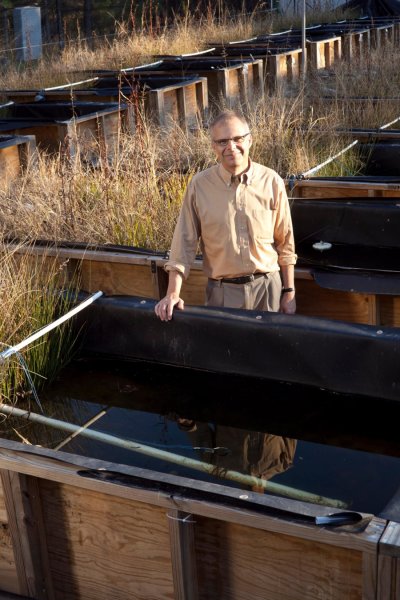All that is gold is not biochemically stable
In a nanoparticle frame, the regularly exceptionally stable, latent, noble metal really gets destroyed by an organism found on a Brazilian sea-going weed.While the discoveries don't give desperate alerts about any obscure dangerous impacts of gold, they do give a notice to specialists on how it is utilized in specific analyses.
The examination was distributed August 13 in the diary Nature Nanotechnology.
CEINT analysts from Duke, Carnegie Mellon and the University of Kentucky were running a trial to explore how nanoparticles utilized as a business pesticide influence wetland conditions within the sight of included supplements. Albeit genuine natural surroundings regularly get dosages of the two pesticides and composts, most examinations on the ecological impacts of such mixes just take a gander at a solitary contaminant at any given moment.
Read about: Pre programmed new material which can alter shape on the application of light and temperature.
For nine months, the specialists discharged low measurements of nitrogen, phosphorus and copper hydroxide nanoparticles into wetland mesocosms - little, human-made structures containing diverse plants and microorganisms intended to speak to a common habitat with test controls. The objective was to see where the nanoparticle pesticides wound up and how they influenced the plant and creature life inside the mesocosm.
The scientists likewise discharged low dosages of gold nanoparticles as tracers, accepting the organically dormant nanoparticles would stay stable while relocating through the biological system. This would enable the specialists to translate information on the pesticide particles that halfway break up by demonstrating to them how a strong metal molecule acts inside the framework.
read about: Quadcopter dancing robot with its dangly legs
In any case, when the scientists went to dissect their outcomes, they found that a large number of the gold nanoparticles had been oxidized and disintegrated.
"We were shocked totally," said Mark Wiesner, the James B. Duke Professor and seat of common and natural designing at Duke. "The nanoparticles that should be the most stable ended up being a minimal stable of all."
Read about: Smart Sensing Technology in Footwear and Textiles.
After further review, the scientists found the guilty party - the microbiome developing on a typical Brazilian waterweed called Egeria densa. Numerous microorganisms emit synthetic compounds to basically mine metallic supplements from their environment. With their digestion spiked by the investigation's additional supplements, the microscopic organisms living on the E. densa were catalyzing the response to breaking down the gold nanoparticles
.
read about: StarVR’s latest headset brings eye-tracking
This procedure wouldn't represent any danger to people or other creature species in nature. In any case, when scientists configuration explores different avenues regarding the suspicion that their gold nanoparticles will stay unblemished, the procedure can bewilder the translation of their outcomes.
"The suspicion that gold is idle did not hold in these examinations," said Wiesner. "This is a decent exercise that underscores how genuine, complex conditions, that incorporate for instance the microbes developing on leaves, can give altogether different outcomes from tests keep running in a research facility setting that do exclude these complexities."
Read about: Discovery of Artificial lung successfully implanted in pigs
This work was done at the Duke Center for the Environmental Implications of Nanotechnology (CEINT), which is upheld by the National Science Foundation and the Environmental Protection Agency under NSF Cooperative Agreement EF-0830093 and DBI-1266252.



 Anit tarafdar
Anit tarafdar


 Posted in:
Posted in: 
0 Comments:
Post a Comment